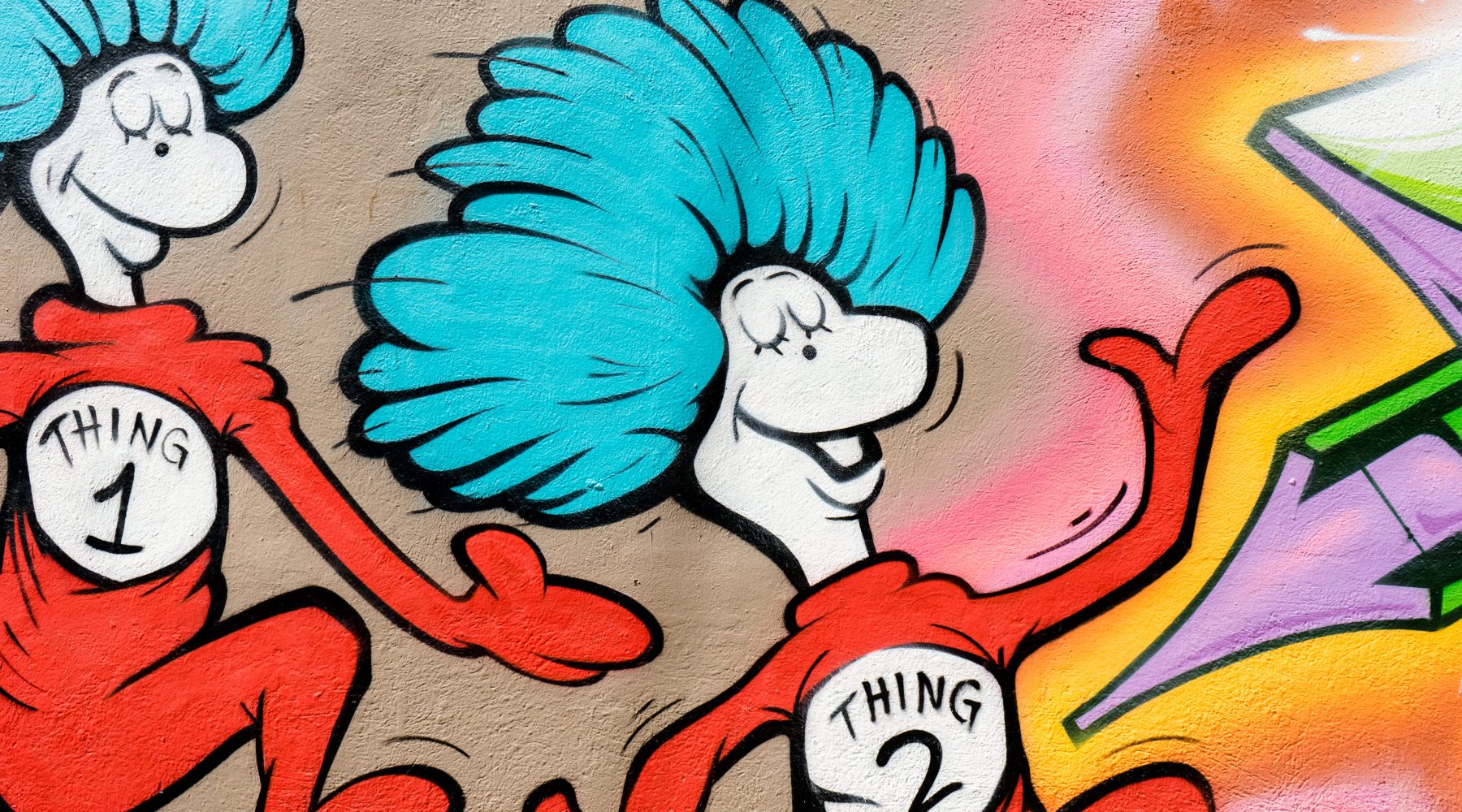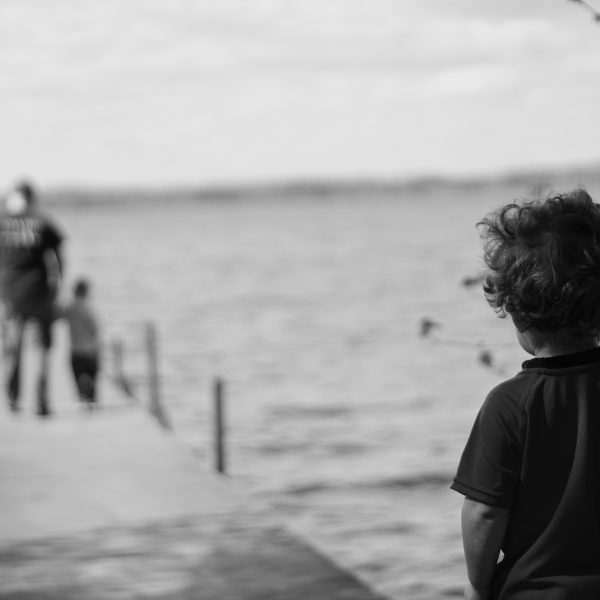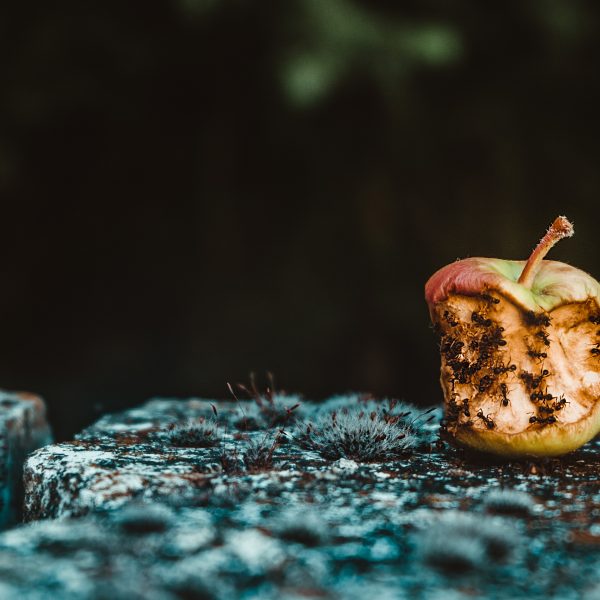What Dr. Seuss Can Teach Children About Consent

It’s never too early to learn that “no” is a boundary, not a punishment. When I was a child, my mum would on occasion make us kids a special breakfast of green eggs and ham. It magically merged worlds for me. The imaginary food from my book became a reality, right there on the table.
But a few decades later, as a preschool teacher, I read the beloved children’s story, Green Eggs and Ham, to a class of 15 wide-eyed and openhearted children, and began to feel a just a little uncomfortable. In the era of #MeToo, this story sounded less like a paean to trying new things and more like the script of coercion: If I keep asking, maybe you’ll change your mind and actually really like what I want you to do.
Would you, could you on a boat? Would you, could you, in a moat?
I would not, could not, on a boat. I would not, could not, in a moat.
I do not like green eggs and ham. I do not like them, Sam I Am!
Thinking about what we had read, my co-teacher and I looked at each other grimacing. Should we have reviewed the book before introducing it? We decided right then to use it for an impromptu lesson in setting and respecting one another’s boundaries.
It was as simple as tossing out some questions to the children and opening the circle to a group discussion: How might Sam I Am’s friend be feeling? Have you ever been asked to do something you did not want to do? What was that like? What are some words and clear signals we can use when we would like someone to stop what they are doing to us or to someone else? Let’s review those together.
They soaked it in: Finally someone was asking them about their real-life, day-to-day experiences of being human.
The goal of our common work as committed allies of children was clear: to normalise empathy, respect, and healthy boundaries over coercion and violence. Every book, every game, every interaction, really, can be understood as an opportunity to practice honouring the full humanity and the full dignity of those around us.
It always seems like a small miracle when children as young as 3 rise to the occasion and thoughtfully participate in complex conversations around topics such as persuasion versus coercion, respect versus indignity. But maybe it shouldn’t surprise us.
Children, as “minors” and “dependants,” have a lot to negotiate when it comes to having their needs met and rising to the rules and expectations set by adults. The survivors of childhood violence and coercion have been coming forward with the same story: Not all adults know how to be good allies.
Sometimes those grown-ups haven’t done the work of processing their own trauma and mistakenly off-load it onto the children in their lives. In doing so, they’ve perpetuated cycles of “power over” relationship dynamics, such as shame, punishment, and vindictive discipline, over “power with” practices, which include discussion, reflection, and teaching skills when mistakes are made. It’s this positive approach—if we can learn to draw from it—that helps the children as they grow into young adults and face more challenging and complex situations where consent is on the line.
We have to put ourselves in their shoes, to find them where they are, facing social and emotional challenges.
Our classroom was a microcosm of society. Conflicts happened. Little Alicia, for instance, was having trouble asking for hugs from her friends. She’d come into the room and throw her arms around Little Sam.
Sam would push her away, she’d push back, and come at him again for a hug with greater force—even a choke grip. There’d be more pushing, and then crying. How to intervene? It’s not enough to tell children to “use their words,” because, and we often forget, children don’t have words to use or know how to use them effectively until they get to practice.
So in our class, we used the opportunity to give a quick lesson on how to ask for a hug, and how to say, “No, thank you” or “Yes, please,” while also helping children feel secure and supported that their “no” would be heard and honoured, without any risk to themselves or to the relationship. “He said, ‘No, thank you,’ so now let’s give him room to pass by.”
And it applies to their relationship with us, too. We can model healthy consent by removing any shame and humiliation when we tell children no. It’s a boundary, not a punishment. That way, we show that removing consent from an action does not mean removing our love.
Similarly as child allies, we offer children the option to tell us no (when it’s not a matter of safety) when, for example, we would like a hug and the child isn’t up for one. We invite them to share effective words and let them practice respectful boundaries, not just with other children, but with us.
To support and work with children to share values that we see severely lacking in society, we have to put ourselves in their shoes, to find them where they are, facing social and emotional challenges, and really see the world through their eyes. To really see them.
“We’ve all been children once,” Antoine de Saint- Exupéry wrote, “but few of us remember it.” Remembering what it was like to be a child is not a call to maudlin sentimentality. It’s about remembering, as much and as far back as possible, what life was like: what frustrated us, held us back, or harmed us, so that we do not repeat the same patterns of behaviour. What did we need then that we can offer the children in our lives now?
Stephanie Van Hook wrote this article for YES! Magazine. Stephanie is executive director of the Metta Center for Nonviolence and author of Gandhi Searches for Truth: A Practical Biography for Children. Follow her on Twitter.
The article above has been re-shared with the permission of YES! Magazine. Please see here to read the original piece.
Popular

Workforce
Quality
Practice
Provider
Research
How one teacher is using Little J & Big Cuz to build empathy, understanding and confidence in First Nations learning
2025-12-08 07:15:19
by Fiona Alston

Quality
Policy
Practice
Provider
Economics
Research
Workforce
NQF Annual Report 2025: Quality gains continue, but sector faces compliance pressures and persistent equity gaps
2025-12-10 07:21:19
by Fiona Alston

Research
Provider
Intentional science play: a three‑stage pathway to foster children’s scientific literacy in the early years
2025-12-10 07:45:26
by Fiona Alston
















